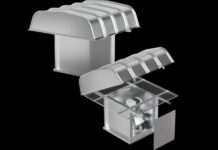In 2019, Washington State legislature passed House Bill 1257 (HB 1257), a performance-based energy efficiency framework focused on existing buildings greater than 50,000 square feet. The Washington State Clean Buildings Standard (HB 1257) creates a framework that provides each applicable building an Energy Use Intensity (EUI) target based on use and climate zone. On July 1, 2021, the WA Dept. of Commerce sent letters of notification to building owners who would be impacted.

Washington’s new HB-1257 law is expected to have a profound impact on owners and managers of large buildings across the state, since this legislation establishes requirements and deadlines to meet certain energy efficiency criteria. We spoke with two industry professsionals for their take on the impacts of the new law:

NV5
Daniel Kolimar is project manager and energy efficiency engineer with NV5, a provider of compliance, technology, and engineering consulting solutions for public and private sector clients. He works with clients save significant amounts of money through cost-effective solutions.

The Paragon Group
Coddington is the managing broker for The Paragon Group, a full-service real estate and property management agency based in Richland, WA. She provides commercial and multi-family property management and investment sales throughout Washington State.
What’s the number one thing property owners and managers need to know about this legislation?
Kolimar: Step one in the law is to determine your Energy Use Index (EUI) so you can then determine if you comply. Getting started with this is the first step that allows us to figure out what the next steps should be.
Coddington: The law requires each building to be analyzed for its energy use and efficiency as the first step. Now is the time to start that process. Now is the time to get smart on this topic [to] get compliant before the deadline.
What do you see as the biggest risk a property owner/manager faces with HB 1257?
Kolimar: There are two key related risks — waiting too long to start the EUI review and the macro supply chain issues.
Coddington: Cost. These are efforts that need to be planned for in budget cycles. If not planned for appropriately, all the available grant funds will be gone, and property owners will get stuck with the full cost.
Once you have determined a building doesn’t meet the standards, how do you move forward?
Kolimar: I use a three pronged approach to achieve the Owner’s overall goals. First, I review the building operational efficiency and fix the low/no cost operational issues. Second, I review the currently installed equipment to determine if equipment should be replaced with more efficient alternatives as part of a wider capital replacement program. Third, I consider renewable energy mixes to enhance the building resiliency and EUI. I avoid replacing equipment unless it is absolutely necessary.
Coddington: I like to see simple operational changes and improvements that make a building more desirable for future tenants, so the owner sees a return in future. For example, if equipment changes are needed, I’d like to see visible changes that tenants directly benefit from, like lighting retrofits to LEDs with daylight harvesting.
Should building owners consider renewable energy options to meet the standard?
Kolimar: Renewable energy can be expensive, so I think it becomes a particularly good option once it aligns with an owner’s other needs/desires. Before people [avoid] renewables I recommend they have a consultant review their current situation because payback periods might be shorter than they think and there may be alternative funding sources to pay for the system entirely.
Coddington: Sure, if they’re looking for a meaningful investment rather than just doing the minimum to come into compliance. It’s not something to do lightly, but I think renewable energy got a bad rap as being too expensive when home solar became popular before it became affordable — things have really changed.
Should property owners/managers be working with specialists? Or is this easy to DIY?
Kolimar: Absolutely. Finding a consultant with a flexible solution that can provide the best value and provide the continual reporting that is required to meet future needs is critical. Open and honest communication to the client is key so they can make informed decisions that affect their property and brand.
Coddington: Without a doubt. Property managers need to be alerting their clients to this requirement, but it’s important to remember what we are, and aren’t, licensed for. Involving an expert like Daniel results in the most cost-effective measures to gain compliance, and being a financial benefit to clients is our ultimate goal.
What warnings would you give a property owner/manager?
Kolimar: Don’t hire just any consultant who claims they can help, and be cautious of those who sell equipment as the silver bullet solution. I strongly advise property owners/managers find a proven consultant with strong energy savings experience and wants to be part of the solution. My focus is on providing economical solutions and I recommend equipment replacement only when necessary.
Coddington: Don’t wait. You’ll need to gather a year of data to determine what is needed, and you don’t want to miss out on the available funding to cover the cost. Remember your budget cycles. And don’t hire someone who sells products to do your analysis — get an independent energy efficiency consultant so you know you’re seeing all your options.
On November 18, NV5 will present a webinar: Understanding WA HB1257 – The Clean Buildings Standard And What It Means For You.
Click here for more news and stories about Energy Management.
















![[VIDEO] Job Order Contracting: Accelerating the Projects that Matter](https://facilityexecutivemagazine.kinsta.cloud/wp-content/uploads/2024/05/maxresdefault-324x160.jpg)
